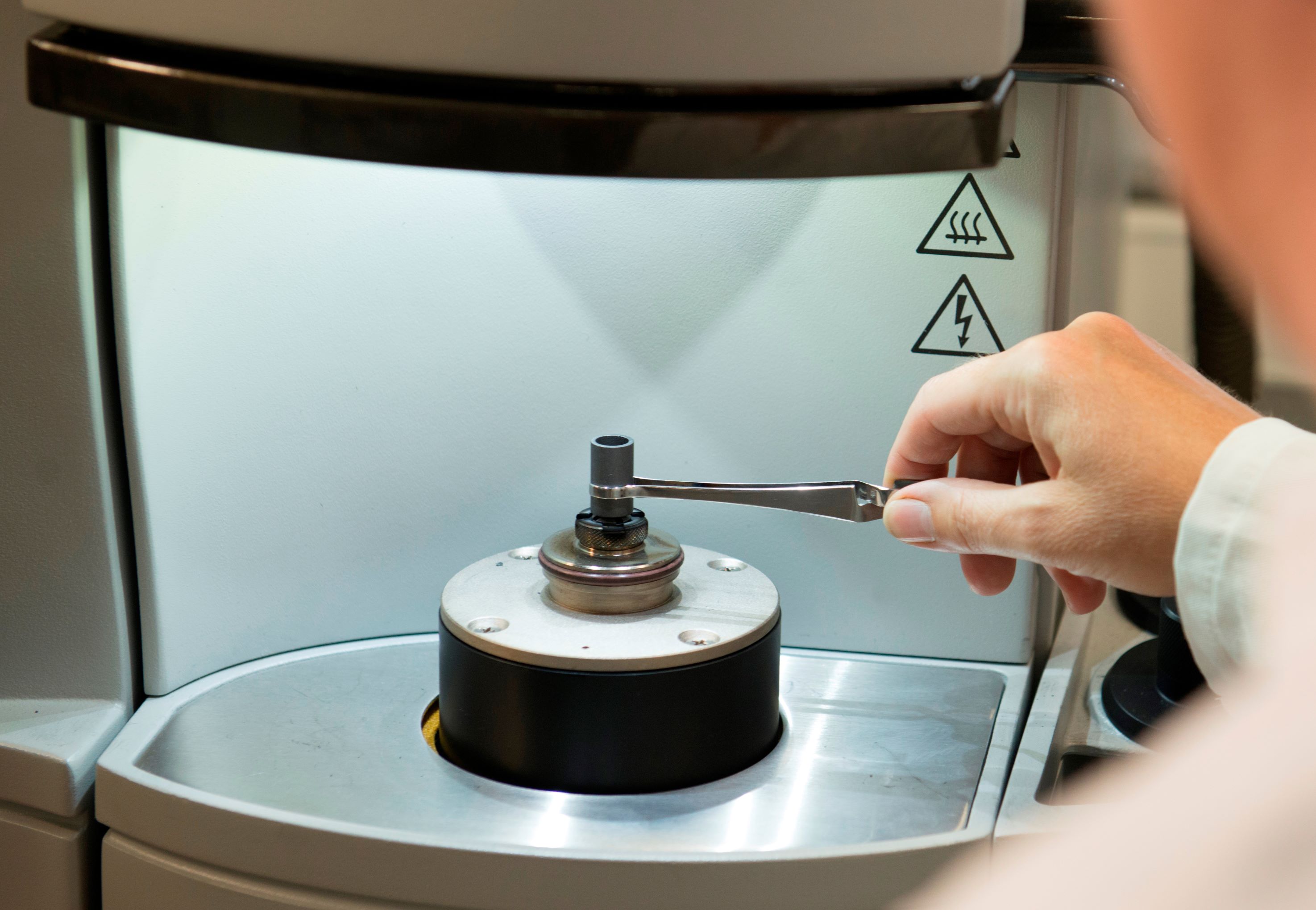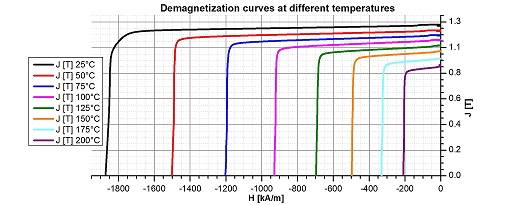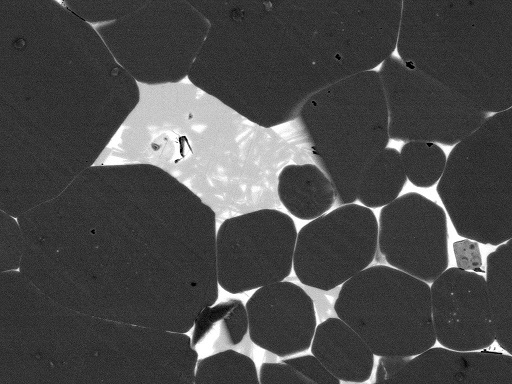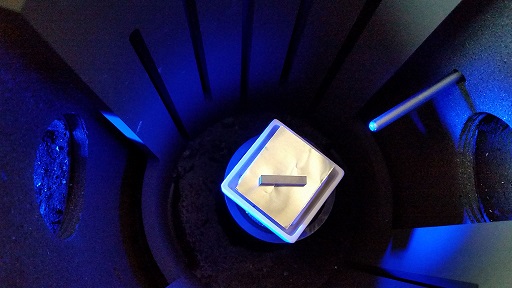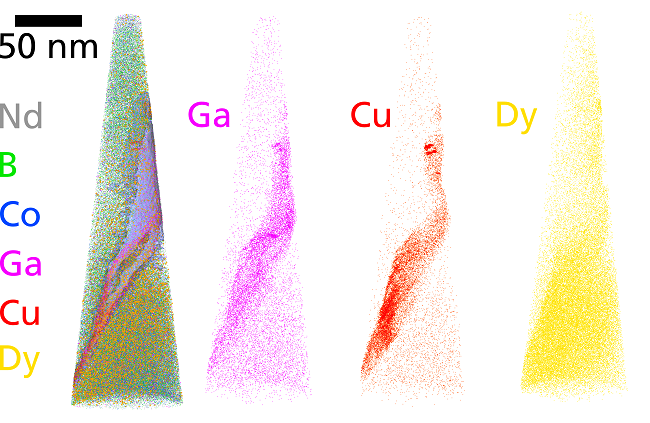Analytics
Magnetic properties and domain structures
For quality control of permanent magnets determination of magnetic properties is very important. To evaluate magnetic properties demagnetization curves can be measured and the most important magnetic properties like remanence, coercivity and maximum energy product can be derived from this measurements. Depending on the sample size temperature dependent magnetic characterization can be done with a permagraph (large samples) or in a PPMS-VSM (small samples). Domain structures in variable magnetic fields can be observed in a specially designed Kerr microscope. For analysis of domain structures with higher magnification a magnetic force microscope (PPMS-MFM) can be used.
Scanning electron microscopy
Scanning electron microscopy (SEM) can provide important information on the microstructure of Nd-Fe-B permanent magnets for quality control. Concerning Nd-Fe-B magnets the magnetic properties are highly dependent on the distribution of the rare earth rich grain boundary phase (bright contrast in the image) and the grain size of the ferromagnetic main phase (dark regions). Therefore electron microscopic images can give important information on the quality of magnets.
Elemental analysis (ICP)
Besides Neodymium, Iron and Boron Nd-Fe-B permanent magnets also comprise Praseodymium, Cobalt, Copper, Gallium, Aluminium and in magnets for high temperature applications also heavy rare earths like Dysprosium or Terbium. All those elements have an impact on magnetic and other physical properties. Since the magnets often contain only small amounts of these elements they are not incorporated in the data sheet of the supplier. A complete analysis of all contained elements via optical emission spectroscopy (ICP-OES and ICP-MS) provides important information for quality control of magnetic materials.
Analysis of light elements (O, N, H and C)
The rare earth elements used for Nd-Fe-B magnets tend to be easily oxidized. Contamination of magnetic material with oxygen during production has a detrimental effect on magnetic properties of the final magnet. Via hot gas extraction the concentration of light elements like oxygen, nitrogen, hydrogen and carbon can be determined. Contamination of Nd-Fe-B magnets with carbon leads to drastic decrease in magnetic properties even for small carbon concentrations.
Thermo-optical analysis of sintering behavior
Especially for production processes based on rare and expensive raw materials like rare earth elements an efficient use of material as well as optimizing the sintering process and near net shape production are very important. The thermo-optical device (TOM-AC) used at Fraunhofer IWKS is designed for in situ observation of green bodies during sintering under inert gas or vacuum. An integrated CCD camera records the sample shape during the whole process. The software tracks the change of sample size in two spatial directions simultaneously. The change of sample mass can also be measured during sintering.
3D Atomprobe Tomography (3D-APT)
Magnetic properties of Nd-Fe-B magnets are very sensitive to the distribution and chemical composition of the rare earth rich grain boundary phase. Since the thickness of the grain boundary phase is normally far below 1 µm chemical analysis of this phase via EDS is not suitable. Via laser assisted atom probe tomography chemical compositions can be determined on atomic scale and can be depicted space-resolved. Defects at grain boundaries as well as intergranular defects can be elucidated.
Determination of corrosion behavior
Since the rare earths in Nd-Fe-B rare earth magnets are highly reactive they tend to be easily oxidated and they react with humidity or aggressive media to hydroxides and oxides. Oxidation and corrosion of the material leads to degradation of mechanical properties. Therefore magnets are coated for the specific application. Long term stability against corrosion is tested under accelerated conditions with elevated temperatures and controlled water vapor pressure. In this highly accelerated stress test (HAST) the coating can be tested as well.
Density measurements
During quality control of produced magnets physical properties like the density of the finished magnets are determined. Density measurements can be done with a He-pycnometer and a balance with Archimedes-inset.
